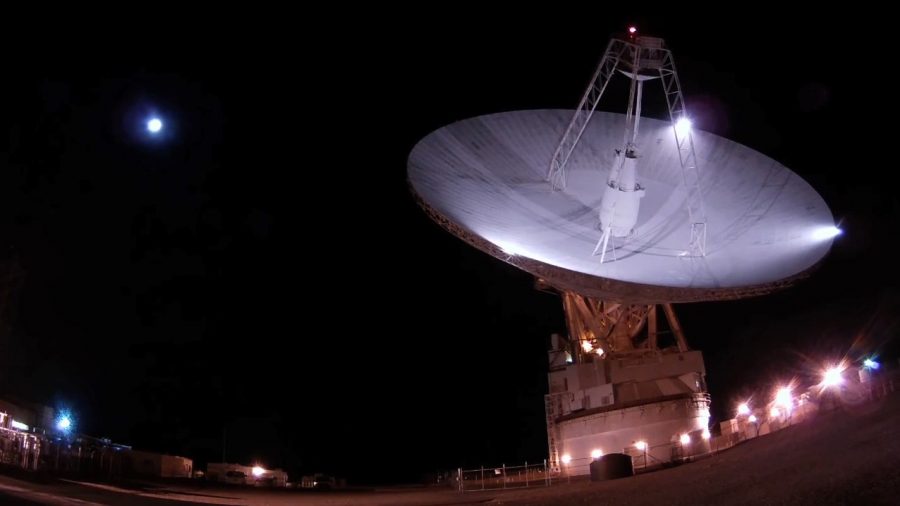NASA has found a missing Indian spacecraft from the mission Chandrayaan-1 after eight years. The finding was made by NASA’s Jet Propulsion Laboratory in California.
Because of the size of the Indian spacecraft, the research was very difficult. The team used an antenna to send microwaves to the Moon from NASA’s Goldstone Deep Space Communications Complex in California. The method used to find the spacecraft was so complicated because the Moon has some regions called “mascons” that count with a higher gravitational pull that can change the orbit of a spacecraft.

Despite its small size, they found the spacecraft
NASA’s radar sent microwaves that bounced back from the Moon’s north pole, where the team pointed the antenna last year. They based that decision on the possible fact that the spacecraft could be in a polar orbit, so it would eventually pass from both north and south poles, crossing the radar scope.
“It turns out that we needed to shift the location of Chandayaan-1 by about 180 degrees, or half a cycle from the old orbital estimated from 2009,” said Ryan Park, from the JPL’s Solar System Dynamics group, according to Perfscience.
According to NASA’s website, the observations were done with the most powerful astronomical radar system on Earth from the Arecibo Observatory in Puerto Rico.
The finding of the Chandrayaan-1 also represents the power of NASA’s antennas and radars to detect small spacecraft in lunar orbit and the possibility of using all that power to join this technology to manned missions to space, especially to the lunar orbit.
“We have been able to detect NASA’s lunar Reconnaissance Orbiter and the Indian Space Research Organisation’s Chandrayaan-1 spacecraft in lunar orbit with ground-based radar. Finding India’s Chaandrayaan-1 required a bit more detective work because the last contact with the spacecraft was in August of 2009,” said Marina Brozovic from NASA, according to Prescience.
The first Indian lunar mission
The Chandrayaan-1 spacecraft was in charge of taking moon pictures, and it worked for 312 days, studying the lunar surface, also the mission was looking for water ice at the lunar poles. But in 2009 something went wrong: one of the sensors was burned because of solar radiation.
At that moment, the Indian Space Research Organization (ISRO) decided to change the spacecraft’s orbit to almost 125 miles over the lunar surface, but on August 28 the contact was lost. Nevertheless, in September 2009 it was reported that the Chandrayaan-1 detected water ice on the moon.

Chandrayaan is the first Indian mission to the moon, and Chandrayaan-1 was its first launching. According to NASA, the spacecraft carried a video camera, a radar altimeter and a mass spectrometer, and also instruments from ISRO, NASA, and the European Space Agency.
With this new finding, maybe the next missions to the moon would have the company of those powerful radars to avoid the possibilities of losing contact with the spacecraft, especially the manned ones.
Other lost spacecraft
This is not the first time NASA has found a lost spacecraft. In August 2016 they recovered contact with the Solar Terrestrial Relations Observatory (STEREO B) which had been lost for 22 months, since October 2014 when it lost contact with the agency.
This spacecraft was on the same mission than its twin, the STEREO A. They were launched in 2006 to get stereoscopic measurements of the sun on a 2-year mission, until 2008, but they got so many probes that NASA decided to extend the mission of the STEREO crafts.

In that opportunity, the Inertial Measurement Unit of the spacecraft failed, but the team would fix it from Earth without any problem, and the mission would continue.
In 2015, the Beagle 2 from the European Space Agency was found after 12 years lost in Mars surface. This craft landed on Mars on December 25 of 2003, but its landing was done in the Isidis Planitia region, three miles away from its original landing spot.
For 12 years, Beagle 2 didn’t establish any contact with Earth until NASA’s Mars Reconnaissance Orbiter watched it lying with its solar panel partially deployed.
The big mystery is what happened to Beagle 2. It landed successfully and was still operating when it was found. The things went wrong when the solar panels failed to open, and that blocked the communication and the craft’s controlling. But the reasons of why solar panels didn’t open remain unknown.
Another mission will be launched in 2018 with the same objective as the Beagle 2: studying all the conditions of the red planet to conclude if it is possible at some point to allow the existence of any living organisms in Mars.
Source: NASA
